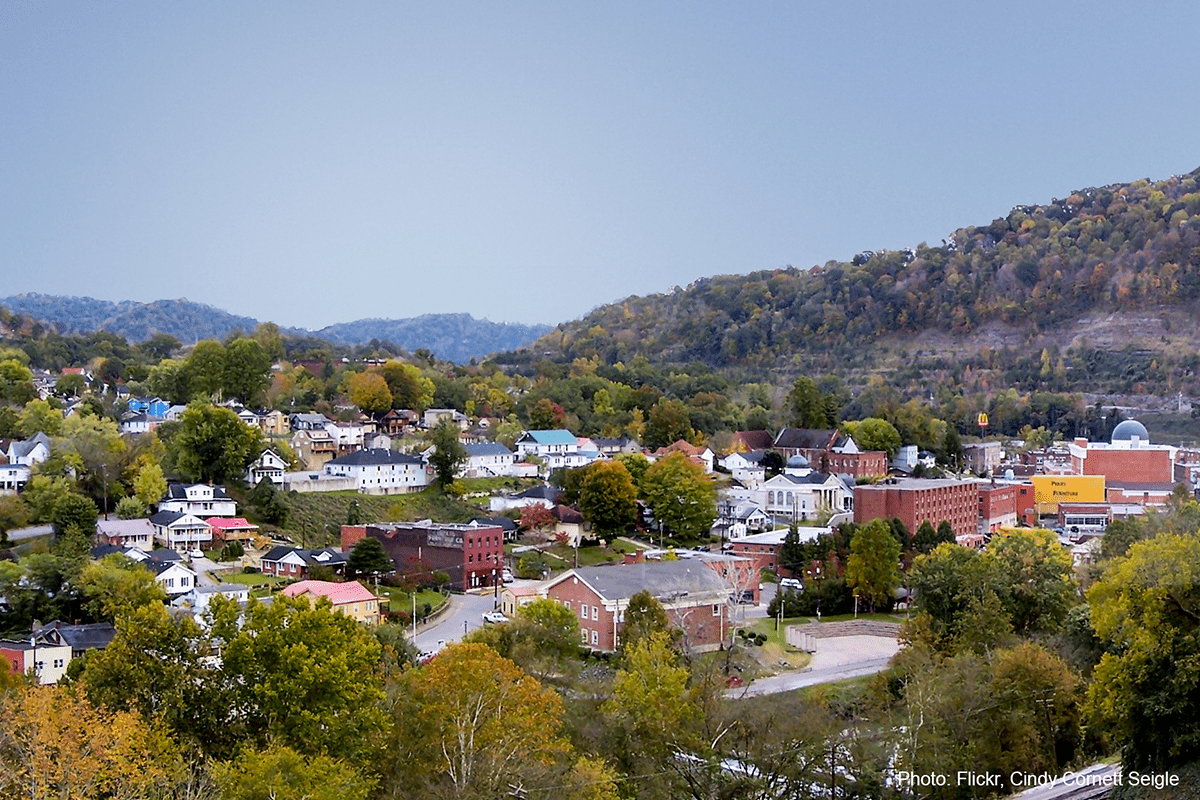Want to Solve Appalachia’s Problems? Listen to Those Who Live There.
By Katie Fogleman, June 20, 2016

This piece was originally published in Above the Noise, Burness’ Medium publication. Check it out here.
I love driving from my home in Louisville, Kentucky, to my parents’ place in the mountains of North Carolina. I drive out of Louisville heading southeast, leaving in my rearview mirror the signs of the city: the close-together houses, the open parking lots that radiate the heat of the summer sun, ambulance sirens and the exhaust of cars and buses.
As the mountains of eastern Kentucky come into view, I feel like I can breathe easier.
The drive takes me through the heart of Appalachia, along narrow mountain roads that lead through small towns with signs that say things like “Welcome to Whitesburg, KY. Population 1534 Friendly People Plus 2 Grouches.”

Driving through these mountains feels like visiting an old friend. Folks stop to wave and ask how I’m doing. My mind drifts to childhood memories of camping, fishing and romping in the woods with my brothers.
It sounds romantic, and it sure is easy to romanticize. But there’s a hidden story here, too:
Along the drive from Louisville through Appalachian Kentucky, the life expectancy drops seven years — from 77 to 70 — in just two hours.
That means that a baby born in Jefferson County, Kentucky, where I live, is expected to live seven years longer than a baby born in some counties in Appalachian Kentucky.
This map, released last week, paints a stark picture (Appalachian counties are to the right of the black line):

The life expectancy gap is both startling and unjust. And the reasons for it are complex.
Health differences between communities are influenced by many factors: opportunities for education and jobs, safe and affordable housing, clean air, availability of nutritious food, opportunities for physical activity, and access to health care, child care and social services. These factors are all integrated, so solutions must be, too.
Dr. Douglas Scutchfield, or Scutch — a “living legend” who hails from eastern Kentucky and has been a public health researcher for decades — presented the new maps at the SOAR Innovation Summit in Pikesville, Kentucky. Scutch said it best:
“This map is a conversation starter. It’s a question. And the answers must come from the communities themselves. If the problem is in the community, the solution is in the community as well.”
Lots of those local solutions were on display at the SOAR Innovation Summit, and they’re pretty inspiring.
The Breathitt County Health Council, for example, is taking direction from youth to help people get healthy. The youth council spearheaded health education campaigns in their schools, hosted a healthy chili cook-off (the quinoa chili came in third place!), and are now documenting residents’ healthy habits — from buying fresh produce to walking for exercise — with their phones. They’ll compile a Snapchat story at the end of the summer to educate their peers and celebrate all the ways Breathitt County supports healthy choices.
In London, Kentucky, the family-owned Laurel Grocery Company is demonstrating how the private sector can help close health gaps. When the company learned that a third of their employees didn’t have a primary care physician and 80% had high blood pressure, they built a health clinic. They put the clinic on site so employees would pass it on the way into and out of work every day. According to David Pearson, the head of the company, their goal was to eliminate all barriers for employees to get preventive care. Two years later, employees are healthier — more than 50 people have lost weight, and more than 140 have lower blood pressure — and health cost per employee is down.

And there are more solutions beyond eastern Kentucky. In Williamson, West Virginia, for example, Sustainable Williamson unites people working on several fronts — economic development, healthy foods, housing and more — to achieve the common goal of improving health in their community. According to Dino Beckett, who helps lead the group, this collaboration has resulted in things you would not have seen in Williamson five years ago: monthly 5Ks, families taking their children to the farmers’ market, and a community garden where people learn how to grow healthy foods for their families and neighbors. Williamson recently won the Robert Wood Johnson Foundation Culture of Health Prize for its work.
So the life expectancy maps highlight injustice and inequality in Kentucky — and in other states and communities across the United States — but that’s just one part of the picture. The solutions for many of the questions raised by these maps come from the people who live in these cities and towns — the folks who are working every day to address the factors that shape health in their own communities.
Next time I drive from Louisville to the mountains of North Carolina, I’ll be on the lookout not just for natural beauty but also for signs of progress in the Appalachian towns of eastern Kentucky.
I’m excited to keep learning about local solutions, and to cheer on and amplify the stories of folks doing this crucial work.
